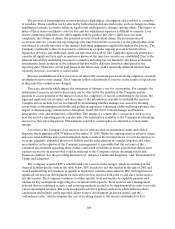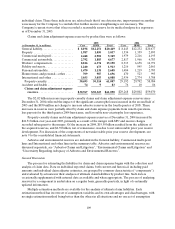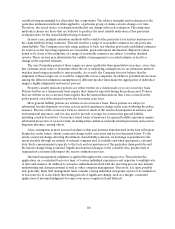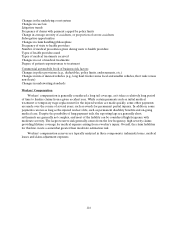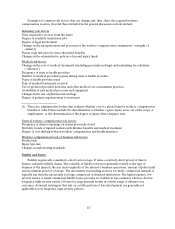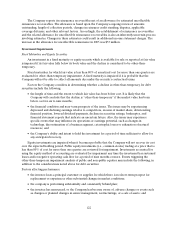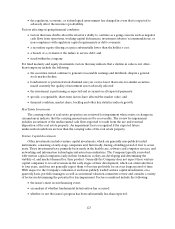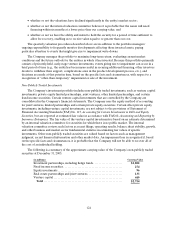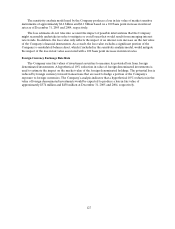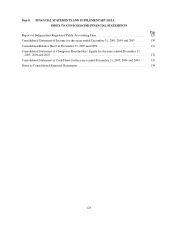Travelers 2005 Annual Report Download - page 130
Download and view the complete annual report
Please find page 130 of the 2005 Travelers annual report below. You can navigate through the pages in the report by either clicking on the pages listed below, or by using the keyword search tool below to find specific information within the annual report.
118
Surety has certain components that are generally considered short tail coverages with short reporting
lags, although large individual construction and commercial surety contracts can result in a somewhat
longer settlement tail, based on the lengthand complexity of the construction project or commercial
transaction being insured. (Large construction projects can take many years to complete.) The frequency
of losses in surety correlates with economic cycles as the primary cause of surety loss is the inability to
perform financially. The volatility of surety losses is generally related to the type of business performed by
the insured, the type of bonded obligation, the amountof limit exposed to loss andthe amount of assets
available to the insurer to mitigate losses, such as unbilled contract funds, collateral, first and third party
indemnity, and other security positions of an insured’s assets. Certain classes of surety claims are very high
severity, low frequency in nature. These can include large construction contractors involved with one or
multiple large, complex projects as well as certain large commercial surety exposures. Other claim factors
affecting reserve variability of surety include litigation related to amounts owed by and due the insured
(e.g., salvage and subrogation efforts) and the results of financial restructuring of an insured.
Examples of common risk factors that can change and, thus, affect the required fidelity and surety
reserves (beyond those included in the general discussion section)include:
Fidelity risk factors
Type of business of insured
Policy limit and attachment points
Third-party claims
Coverage litigation
Complexity of claims
Growth in insureds’ operations
Surety risk factors
Economic trends, including the general level of construction activity
Concentration of reserves ina relatively few large claims
Type of business insured
Type of obligation insured
Cumulative limits of liability for insured
Assets available to mitigate loss
Defective workmanship/latent defects
Financialstrategy of insured
Changes in statutory obligations
Geographic spread of business
Fidelity and Surety book of business risk factors
Changes in policy provisions (e.g., deductibles, limits, endorsements)
Changes in underwriting standards
Personal Automobile
Personal automobile includes both short and long tail coverages. The payments that are made quickly
typically pertain to auto physical damage (property) claims and property damage (liability) claims. The
payments that take longer to finalize and are more difficult to estimate relate to bodily injury claims.
Reporting lags are relatively short and the claim settlement process for personal automobile liability
generally is the least complex of the liability products. It is generally viewed as a high frequency, low to
moderate severity product line. Overall, the claim liabilities for this line create a moderate estimation risk.
Personal automobile reserves are typically analyzed in five components: bodily injury liability,
property damage liability, no-fault losses, collision claims and comprehensive claims. These last two


